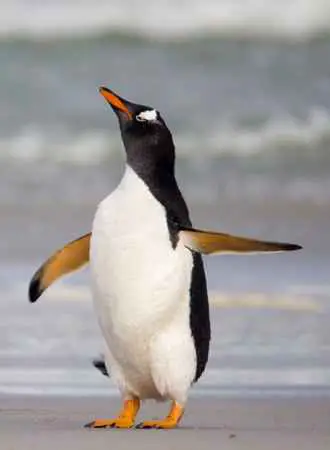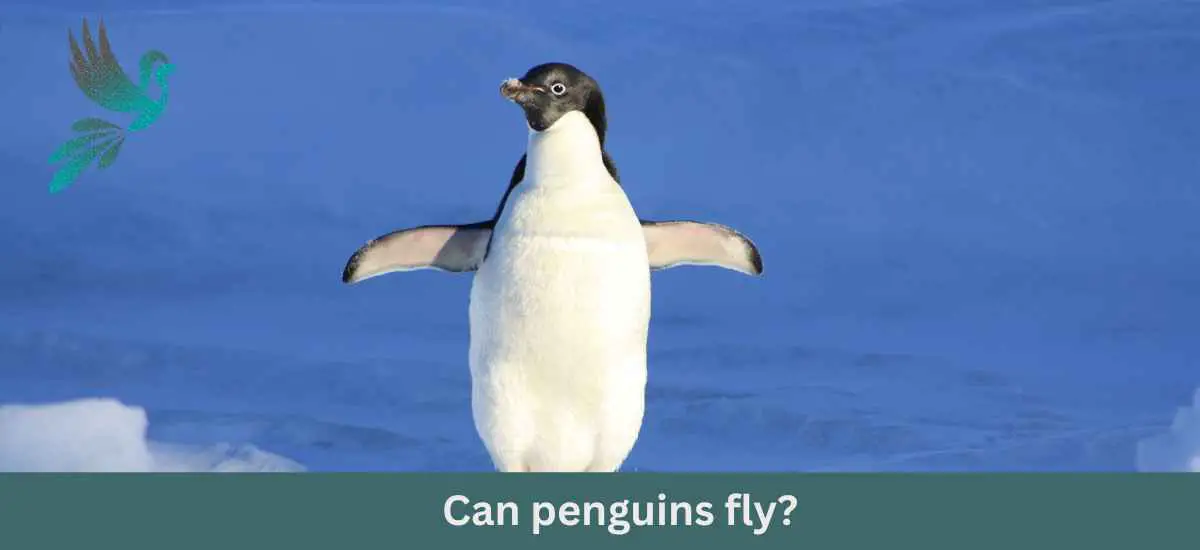Penguins are some of the most beloved and recognizable birds in the world. With their distinctive tuxedo-like plumage and playful personalities, it’s easy to see why they capture the hearts and imaginations of people everywhere.
However, one question that often arises when it comes to these unique birds is whether or not they can fly. The answer is both simple and complex, as penguins have evolved to thrive in environments where flying would be impractical or impossible.
In this article, we will explore the question of whether penguins can fly, and examine the unique adaptations that allow them to thrive in their cold and often harsh environments. From their streamlined bodies to their powerful swimming abilities, penguins are a marvel of evolution and adaptation.
So, let’s take a closer look at these remarkable birds and find out more about their flight abilities.
No, penguins cannot fly. But they are excellent swimmers For one, they can swim up to speeds of 22 miles per hour and dive more than 1,500 feet deep! They’re also able to hold their breath for up to 20 minutes.
Did Penguins Evolve From Flying Birds?
Penguins are a unique and fascinating birds. They evolved from petrels and albatrosses millions of years ago. They are believed to have originated off the coasts of Australia and New Zealand.
Penguins have adapted to new climes over the course of 22 million years, and can now be found in the cold, icy environments of Antarctica. Over the millennia, penguins have lost the ability to fly. But in exchange, they have developed other abilities that help them thrive in their harsh environment.
For example, penguins have thick layers of blubber that insulate them from the cold water and help them to float. They also have webbed feet that act like paddles, propelling them through the water at high speeds.
In addition, penguins have special feathers that keep them dry even when they are swimming.
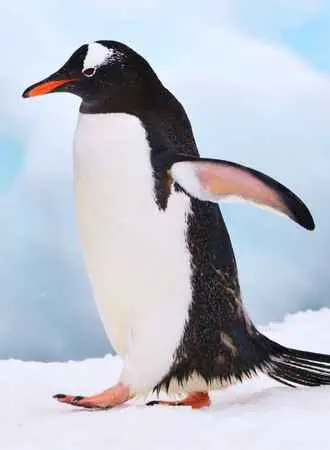
When Did Penguins Stop Flying?
So, why can’t penguins fly? Penguins are one of the most iconic birds in the world, known for their black-and-white feathers and their distinctive waddling walk. What many people don’t know about penguins is that they used to be able to fly and they descended from flying birds.
Around 65 million years ago, penguins transitioned from flying birds to wing-propelled divers. This change would have involved an intermediate stage where their ancestors could use their wings for both flying and diving/swimming underwater.
It is still unknown how and why penguins stopped flying. Over time, though, the penguins’ wings evolved to become better suited for swimming than flying. It took too much effort to fly so they lost the ability to fly. Their wing structure and bones allow them to dive underwater.
Today, there are 18 species of modern penguins, all of which can’t fly. Though they may not be able to fly, penguins are still expert swimmers, spending much of their time hunting for fish and squid in the frigid waters of the Southern Hemisphere.
Penguins are an interesting example of birds specializing instead of compromising. By giving up their ability to fly through the air, they can survive in the frigid temperatures of Antarctica. Flying is a high-energy task and penguins need all the energy they can have to stay warm.
Can Penguins Swim Faster Than Humans?
Penguin birds have evolved into amazing swimmers. Sure, they can’t fly through the air but they can swim up to 22 miles per hour, which is much faster than the average human.
There are several reasons why penguins are such speedy swimmers. First of all, they have webbed feet and flippers to help them move through the water more quickly. In addition, their bodies are streamlined and aerodynamic, making it easy for them to glide through the water. Finally, penguins have a lot of endurance and can swim for long periods of time without getting tired.
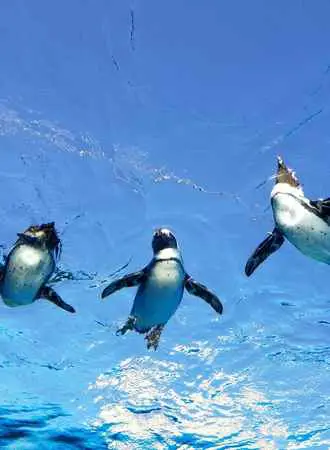
How Do Penguins Swim Faster Than Humans?
Penguins are well-adapted to swimming underwater. They can’t fly so they use their wing bones which are fused straight to form like flippers, and strong pectoral muscles to swim faster. Penguins can reach speeds of up to 22 miles per hour when swimming underwater even with their heavy bodies. This makes them one of the fastest aquatic animals in the world.
Can Penguins Swim Backward?
Although penguin birds are expert swimmers, capable of reaching speeds of up to 15 miles per hour, it is still unknown if they have the ability to swim backward.
It is believed that the penguin is not physically capable of swimming backward, due to the structure of their wing bones.
Others believe that penguin birds simply haven’t been observed swimming backward because they have no need to do so. After all, penguins spend most of their time swimming forward in search of prey or friends.
Ultimately, the answer to this question may remain a mystery until further research is conducted.
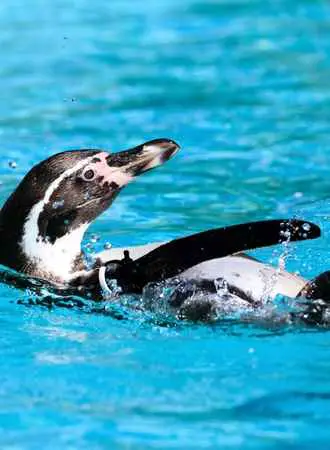
The Conclusion on Can Penguins Fly
So can penguins fly? Penguins cannot fly even though they have wings. This is a well-known fact about these birds. They lost their ability to fly millions of years ago. However, some people still wonder, can penguins fly or if penguins can actually get off the ground and soar through the air like other birds. The answer, of course, is no. Penguins are excellent swimmers and have adapted to life in the water, but they cannot take flight like seagulls or eagles.
FAQs on Can Penguins Fly
What Are Penguin’s Wings Used for if It Can’t Fly?
Penguins are unique birds that are adapted to live in the water. They feed on fishes and krill.
Penguins’ flippers or wings are small and stiff and don’t provide much lift, but they are excellent swimmers. The wings help them paddle and steer through the water, and they can even turn the wings in different directions to change course. This gives the penguin a significant advantage when hunting fish or fleeing from predators and other wild animals.
While penguins can’t fly, their wings are still an important part of their anatomy even though they are the only birds that can’t fold their short wings.
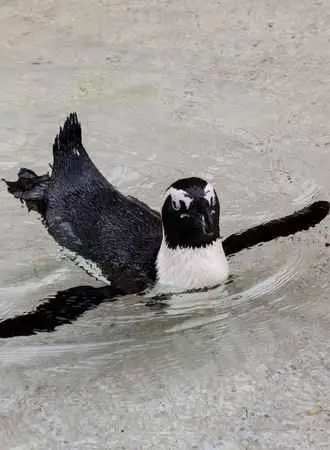
Do Penguins Lay Eggs Like Other Birds?
Like other birds, penguins lay eggs on land. Depending on the species, a penguin may lay one to three eggs. The eggs are generally incubated by the female for up to 65 days. Once they hatch, the chicks are cared for by both birds and typically remain in their family group for several years.
Penguins lay their eggs on land or ice, depending on the availability of suitable nesting sites. Some species, such as the Emperor penguin, lay their eggs in open nests, while other birds build more elaborate structures out of stones or sticks. Regardless of the type of nest, penguins work hard to keep their eggs safe and warm until they hatch into chicks.
How Much Time Do Penguins Spend Underwater?
Penguins can’t fly in the traditional sense but they are among the most well-adapted birds for life in the ocean. On average, they spend up to 75 percent of their lives submerged, using their flippers to propel themselves through the water at speeds of up to 22 miles per hour.
When hunting for prey, penguins can dive to depths of over 1,500 feet and remain underwater for over 10 minutes. At the surface, penguins typically spend only a few seconds coming up for air before diving back down again. As a result, penguins are able to make the most of their time in the water, where they are able to find an abundance of food.
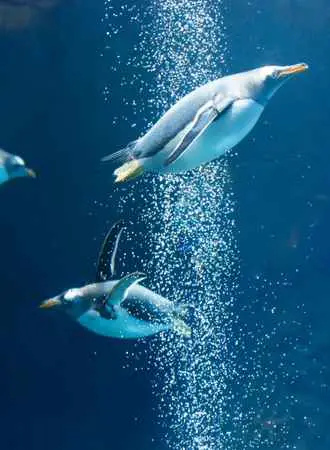
Are Puffins and Penguins Related?
Although they share a common love of the ocean and they feed on fish, puffins and penguins are not actually related. Penguins belong to the family Spheniscidae. The puffin bird, on the other hand, belongs to the family of Alcidae.
Interestingly, although puffins and penguins are not closely related, they do share some similarities. Both birds have wings that are adapted for swimming, and both spend a significant amount of time in the water in search of prey. They also both have webbed feet that help them to navigate the water.
However, there are also some key differences between these two birds. A penguin is much larger than a puffin, and they are not able to fly. In contrast, puffins have brightly colored beaks and feathers, and they are able to fly at speeds of up to 55 miles per hour.
Another bird related to the puffin is the guillemot. Guillemots can dive more efficiently than any other bird flying bird but they are bested by penguins when it comes to diving.
Where Do Penguins Live?
Today’s penguins are one of the most iconic birds of the Southern Hemisphere, and they are found in several different environments across the continent. The majority of penguin species live on the Antarctic coast or on sub-Antarctic islands, where they have access to an abundant food supply and relatively stable temperatures.
There are 18 different species of penguins, five of which are found in Antarctica including Emperor penguins. The other 13 species are found on sub-Antarctic islands, such as the Falkland Islands where the gentoo penguin lives. Some penguins live in warmer climates.
Penguins have adapted to their cold environment in a number of ways, including developing a thick layer of feathers that insulates them from the cold air and water. They also have webbed feet that help them to dive through the water in search of food.
Penguins are social animals, and they typically live in large colonies that can number in the thousands. Each colony has a hierarchy, and penguins will establish pecking orders to determine who gets access to food and mating opportunities.
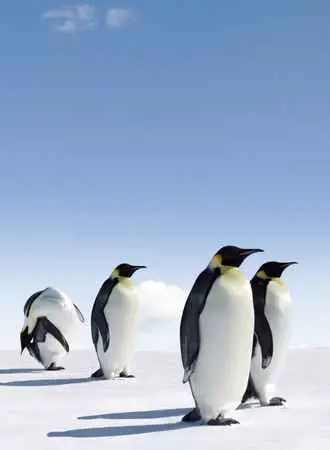
Do Penguins Live in Igloos?
No, penguins do not live in igloos. Igloos are only found in the Arctic. The natural habitat of penguins is in the Southern Hemisphere, around the South Pole.
The word “igloo” actually comes from an Inuit word meaning “house.” Inuits are people who live in the Arctic regions of Canada, Greenland, and Alaska. They build their houses out of snow and ice, which protect them from the cold weather.
Penguins, on the other hand, build their nests out of small stones. These materials help to insulate their eggs and keep them warm. While penguins and igloos may both be found in cold weather, they are found in opposite parts of the world and serve different purposes.
Does Penguin Breathe Through Gills?
Penguins can’t fly but they are interesting creatures. They are different than other birds because they cannot fly. They are also different than fish because they do not breathe through gills. Penguins have lungs and need to come to the surface of the water to breathe air, just like humans.
Penguins can store more oxygen which helps them to propel themselves deeper into the ocean. After reaching these depths, they come back up naturally due to the air in their lungs and air sacs.
